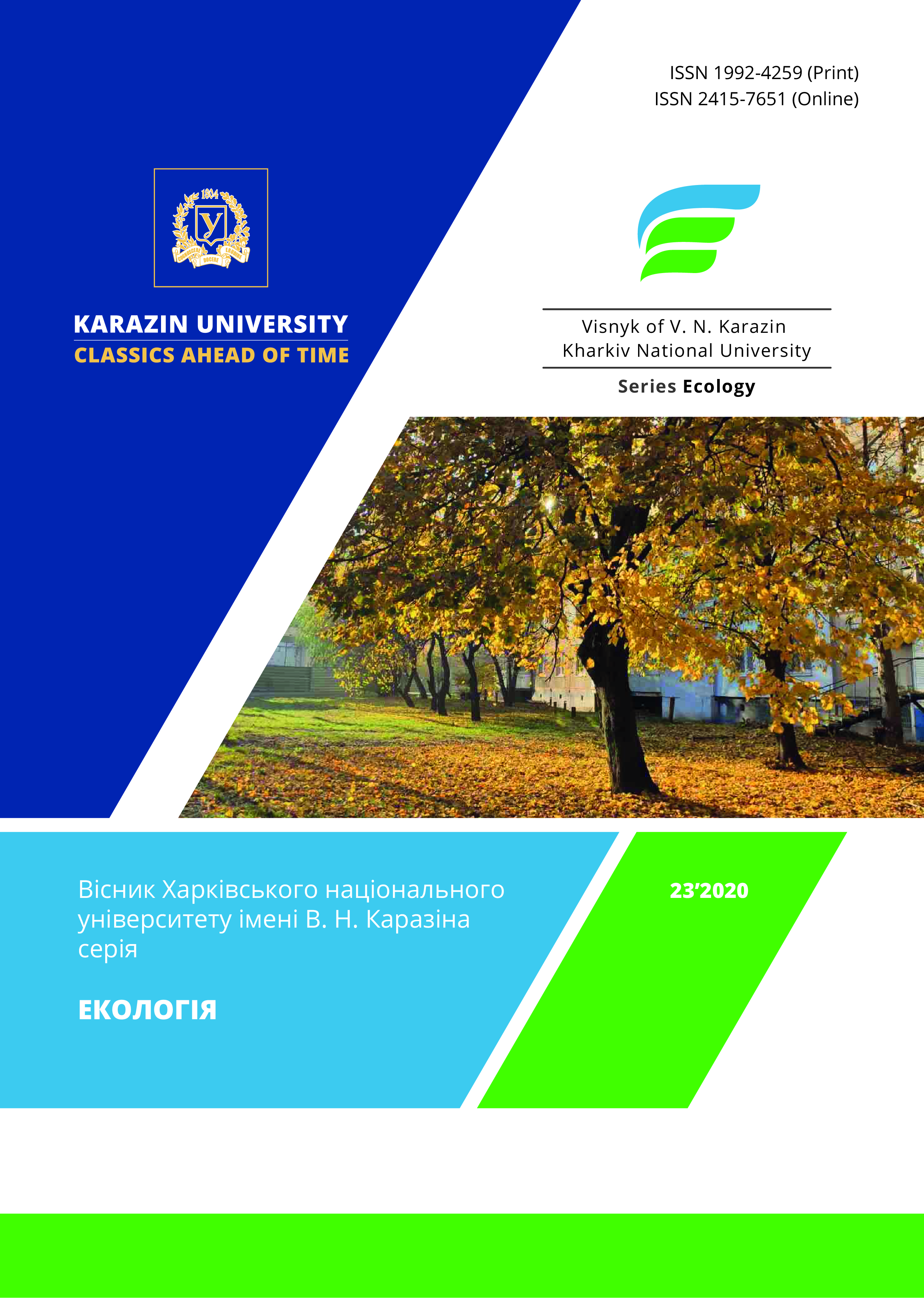Econometric Analysis of Sustainable National Economy Development
Abstract
Purpose. The study objective was to model conditions, mechanisms and opportunities to achieve sustainable development parameters for the national economy.
Меthods. Analysis and synthesis, induction and deduction, analytical grouping and special (abstraction, modelling, etc.) methods of studying economic phenomena and processes have been used.
Results. Based on the analysis of the dynamics of GDP growth rates, sulfur dioxide, nitrogen dioxide, oxide and carbon dioxide emissions during 1991-2017, the cycle of their change lasting 3 - 5 years has been proved. It has been found out that the Environmental Kuznets Curve (EKC) in Ukraine is a specific one due to the "turning points". According to the results of comparing the cyclicality of per capita income growth rates, GDP indexes with the dynamics of dependence between the hazardous substances emissions and per capita income and GDP in actual prices, it is found that they do not always coincide. It gives grounds to make a conclusion about the presence of lag between the emissions volumes changes and values of per capita income and GDP in actual prices. The conclusions are grounded on the comparison of the dynamics of GDP growth rates, income per capita, pollutant emissions and the parameters of their mutual correlation. It has been proposed to carry out coordinated policy referring its economic, social and environmental components, taking into account the time lag to create the conditions for the EKC curve parameters in the economy of Ukraine.
Conclusions. . Based on the analysis of GDP growth rates dynamics, sulfur dioxide, nitrogen dioxide, carbon oxide and dioxide emissions, the periodicity (cyclicality) of their change has been proved. In Ukraine, EKC has a specific nature in the form of separate «turning points», without achievement of long-term parameters of the relationship between the hazardous substances emissions and GDP and per capita income values. Thus, the feasibility of developing the agreed policy concerning the economic (GDP value), social (population income level) and environmental components (conservation activity financing and decrease of hazardous substances emissions) taking into account the time lag, which will create the conditions for achieving not only temporary values, but also long-term parameters of EKC curve in the Ukrainian economy, was substantiated. The obtained results allow to forecast sustainable development parameters of Ukraine for the future.
Downloads
References
Mykhailova, L., Stoyanets, N., Mykhailov, A., Kharchenko, T. & Bachev, H. (2018). Sustainable develop-ment of the Ukrainian agrarian sector: perspectives and challenges. Problems and Perspectives in Manage-ment, 16(3), 28–39. http://dx.doi.org/10.21511/ppm.16(3).2018.03
Kandrashina, E. & Zotova, A. (2018). Changes effectiveness assessment on the basis of sustainable develop-ment factor, Problems and Perspectives in Management, 16(1), 437–444. http://dx.doi.org/10.21511/ppm.16(1).2018.41
Horoshkova, L.A, Khlobistov, Ie.V. & Trofimchuk, V.O. (2019). Interconnection between economic growth and assimilation potential of the environment considering ensuring sustainable development of the national economy. Project Management and Production Development, 1(69), 24-37. Retrieved from http://www.pmdp.org.ua/images/Journal/69/3.pdf (in Ukrainian).
Horoshkova, L.A., Khlobistov, Ie.V. & Trofimchuk, V.O. (2019). Economic and statistical modeling of determinants of the dynamics of environmental pollution in Ukraine. Economics and Organization of Management, 2 (34), 46-55. https://doi.org/10.31558/2307-2318.2019.2.5 (in Ukrainian).
Horoshkova, L.A., Khlobistov, Ie.V. & Trofimchuk, V.O. (2018). Financial mechanisms of sustainable use of territorial resources of natural economic systems. Theoretical and Practical Aspects of Economics and Intel-lectual Property, (18), 275-284. https://doi.org/10.31498/2225-6407.18.2018.180117 (in Ukrainian).
Lopez, R. (1994).The environment as a factor of production: the effects of economic growth and trade liberalization. Journal of Environmental Economics and Management, 27(2), 163–184. https://doi.org/10.1006/jeem.1994.1032
Selden, T. M. & Song, D. (1995). Neoclassical growth, the J curve for abatement and the inverted U curve for pollution. Journal of Environmental Economics and Management, 29 (2), 162–168. https://doi.org/10.1006/jeem.1995.1038
John, A. & Pecchenino, R. (1994). An overlapping generations model of growth and the environment. Economic Journal, 104(427), 1393–1410. Retrieved from https://EconPapers.repec.org/RePEc:ecj:econjl:v:104:y:1994:i:427:p:1393-1410
McConnell, K. (1997). Income and the demand for environmental quality. Environment and Development Economics, 2(4), 383-399. https://doi.org/10.1017/S1355770X9700020X
Stokey, N.L. (1998). Are there limits to growth? International Economic Review, 39(1), 1–31. https://ideas.repec.org/a/ier/iecrev/v39y1998i1p1-31.html
Stern David I. (2003). The Rise and Fall of the Environmental Kuznets Curv. Rensselaer Working Papers in Economics, (0302), October. 32. Retrieved from http://archives.evergreen.edu/webpages/curricular/2005-2006/tesd/Rise%20and%20Fall%20of%20the%20EKC%20(Stern).pdf
Cantore, N. (2006). Exogenous technology as an Environmental Kuznets Curve driving force: an impact assessmen. Mechanism of economy regulation, (3), 11–26.
Nordhaus, W. & Boyer, J. (2000). Rolling the DICE again: economic models of global warming. Cambridge, Massachusetts : MIT Press, 6–8. Retrieved from https://www.researchgate.net/publication/237429571_Roll_the_DICE_Again_Economic_models_of_global_warming
Nordhaus, W. Roll the DICE again: the economics of global warming. Retrieved from http://www.econ.yale.edu/~nordhaus/homepage/rice98%20pap%20121898.PDF.
Authors who publish with this journal agree to the following terms:
- Authors retain copyright and grant the journal right of first publication of this work under the terms of a license Creative Commons Attribution License 4.0 International (CC BY 4.0).
- Authors are able to enter into separate, additional contractual arrangements for the non-exclusive distribution of the journal's published version of the work (e.g., post it to an institutional repository or publish it in a book), with an acknowledgement of its initial publication in this journal.
- Authors are permitted and encouraged to post their work online (e.g., in institutional repositories or on their website) prior to and during the submission process, as it can lead to productive exchanges, as well as earlier and greater citation of published work.





